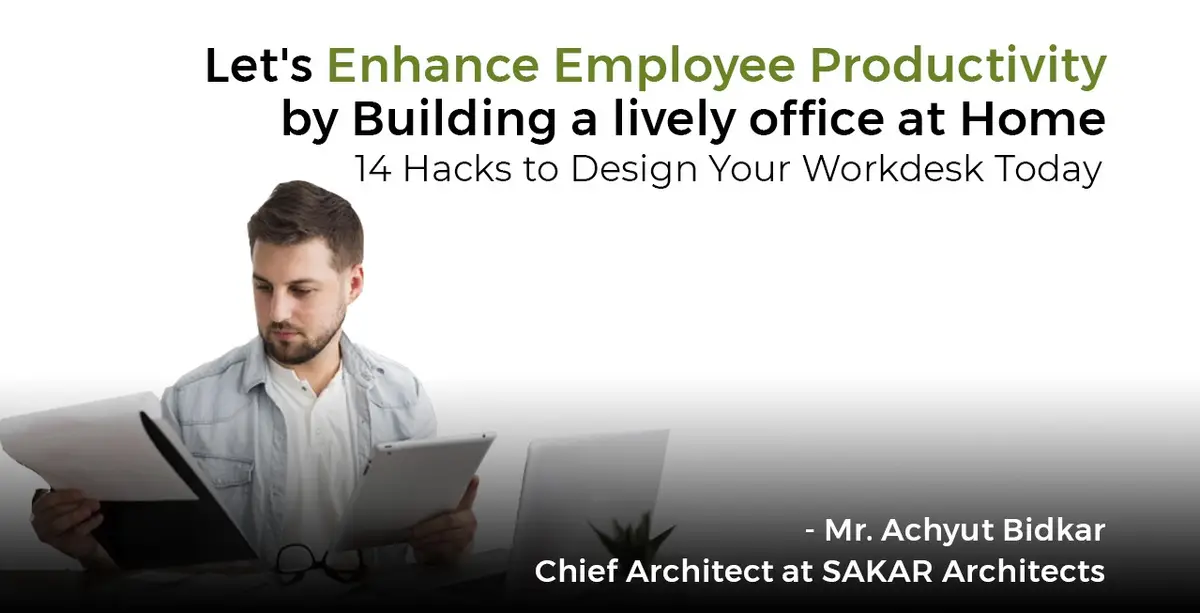16 Hacks to Create a Workspace that Enhances Creativity

Workplace is meant to stir maximum productivity from an employee. Thus, designing a well suitable space to bring out the best in one’s workforce is one of the major responsibilities of the employer. Build a lively office, to make it a trendy space where they enjoy working. During this node of remote operations, we can ensure to build a perfect work cubicle by considering some of the pointers put forth by our Guest Writer.
Offices in general
How to Create a Workspace that Enhances Creativity? Offices are more objective in nature as it deals with serious commitments of businesses, however, while addressing the basic functional needs of the company, the client is equally interested to present the company’s personality, their values as well as their successes to the visitors and the employees working in it. There has been a shift in the approach from looking at an office as merely an efficient workspace with its own systems and disciplines to now an energetic, trendy, and a charming place. The development of newer technologies has enhanced the dynamics of the office space immensely.
Designing workspaces
We generally find that the client is interested in achieving optimum utilization of available space in the allocated budget, which is generally termed as ‘Area Allocated per Person’ and ‘Interior Expenditure per sq ft’. Whereas the architect is more focused on creating efficient and comfortable layouts, taking care of easy internal circulation of staff and office resources. He is equally keen to bring about the aesthetics and ambiance to stimulate the mood of the working staff and the presentation of the company, which is referred to as the corporate identity.
Iconic, eye-catching features and matters of novelty including artifacts and landscape have proven to be business boosters for many companies. Office trends and fashions are moving ahead at a faster pace, asking for a continuous up-gradation and renovation in office spaces which is a real-time reflection of the present social mindset in the commercial world.
It goes without saying that the designer is a champion of handling the basic furniture ergonomics and ease of human activities and movements along with the light and ventilation requirements for the space. He also understands the specific functions of various spaces right from reception, waiting, meeting rooms to more technical spaces like server rooms, etc. Present offices understand the importance of ‘Breakaway spaces’ and ‘Chill-out Zones’. Expansions and internal restructuring of an office is a constant phenomenon and also a positive sign of a progressive organisation.
16 Hacks to Create a Workspace that Enhances Creativity
We find many practising architects and interior designers saying that they prefer designing offices rather than designing residences. The reasoning is generally that there is greater clarity in the requirements of the clients and making the decisions for the same. Following are the major factors influencing the design of any workspace
1. Convenience
Convenience for a workspace starts right from choosing the correct location for the same. Working from home is the most convenient place for most of the employees. Office commute for an urban employee has become an inseparable part of daily life. Conveniently located workspaces can help minimize this inconvenience.
2. Safety
Safety is the prime consideration while designing any architecture. Especially considering the high rise, the complex building being developed today fire safety, safety from natural calamities, electric safety have taken the center stage during planning.
3. Circulation
Understanding the Interrelation of various departments with various services to design an arrangement accordingly which helps avoid unnecessary journeys and blockages.
4. Light and Ventilation
Lighting and ventilation are the aspects which affect an employee most directly. It contributes to creating the right ambiance to enhance the productivity of the whole workspace. The maximum utilization of natural light and ventilation proves to be the most economical and effective solution.
5. Acoustic consideration
A well-designed office has an arrangement of acoustics such that it filters out the noise while also helping isolate workspace which requires concentration and silence. It also comes into play while designing meeting rooms, conference halls, and training rooms where clarity of sound is a prime concern.
6. Transit Places
Lobbies, Passages, foyers, etc help in connecting various functional areas while also defining these spaces. It also acts as an escape route and gathering points while tackling emergency situations.
7. Aesthetics
Aesthetics for a workplace covers everything right from appearance and finishing of functional resources right to decorative objects, artworks, and artifacts. Periodic updation of decorative elements freshens up the ambiance of the workspace.
8. Corporate Identity
This is the major factor that helps identify the personality of the organisation.
9. Privacy
Some functions of the workspace require visual, acoustical, and social privacy to maintain the required secrecy for the functioning of the office.
10. Indoor landscape
Indoor landscaping is utilized to liven up the interiors while also creating a purified environment by reducing the CO2 Concentration.
11. Library
Creating a well-stocked physical and digital library is a very important aspect of any workspace. It not only helps with the date and research but also is a very productive break out space in many instances.
12. Ergonomics
An average employee spends about ⅔ of his awake time in his workspace. It is very essential to take care of the health of his body and mind during this time. A deep understanding of ergonomics helps design office environments that value the well being of the employee.
13. Break-away zones
To ensure greater productivity and efficiency, breaking the monotony of work is very essential. This includes changing work positions, working posture as well as the surroundings. Dedicated zones are planted at strategic places across the office to help the employees.
Read about: The Impact of Creative Expression At Your Work Cubicle
Additional Tips to Build a Workspace that Enhances Creativity
14. Maintenance
Any charming and trendy office is required to be maintained and upgraded continuously. The labor and cost involved in such aspects are required to be reasonable.
15. Financials
Creating office setups encompassing all the above aspects need to be reasonable in costs and flexible for modifications from time to time.
16. Staff training
Like the physical setup required to be maintained, various training is required constantly for the working staff to sharpen their productivity for the office. A training room is often provided for this purpose.




